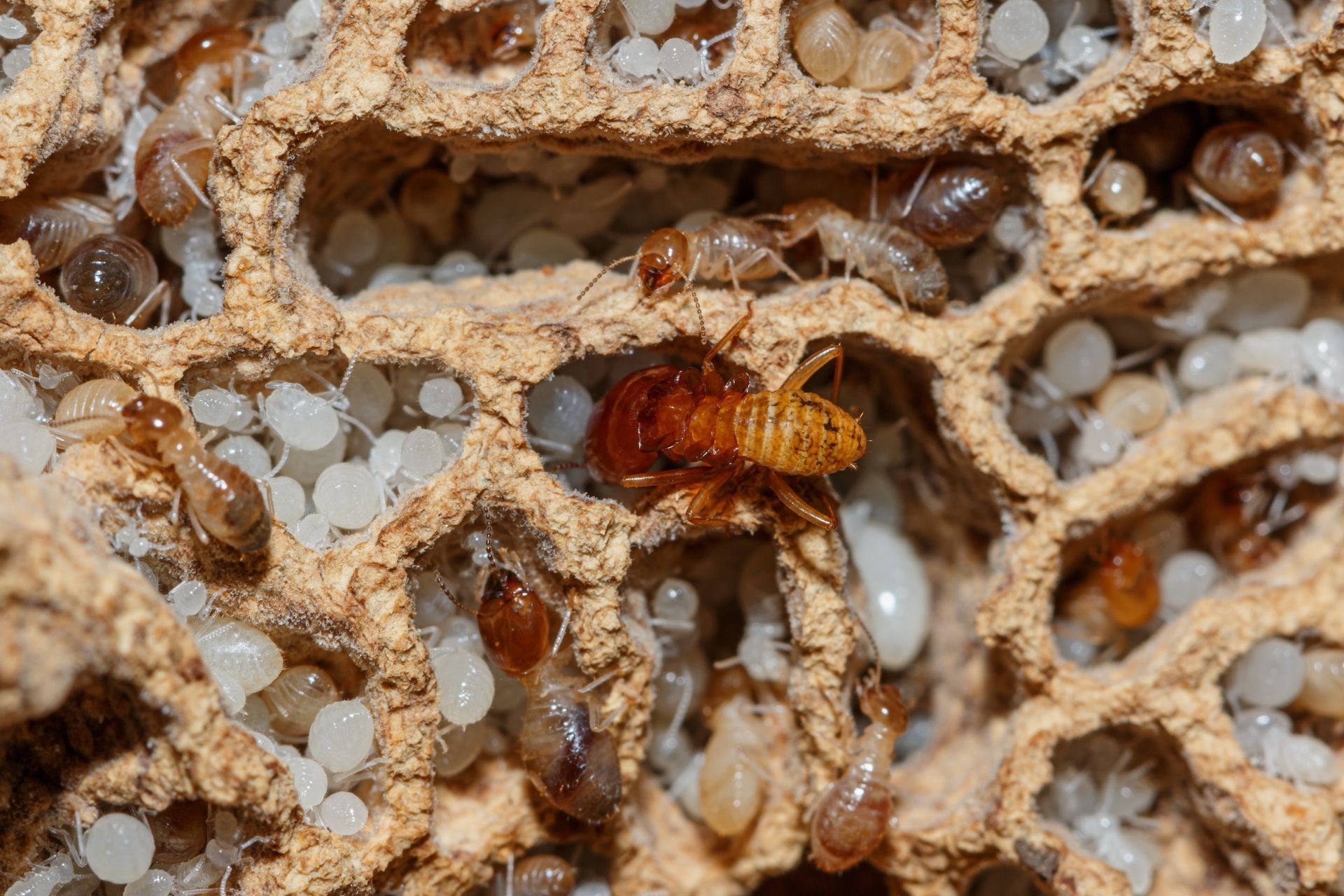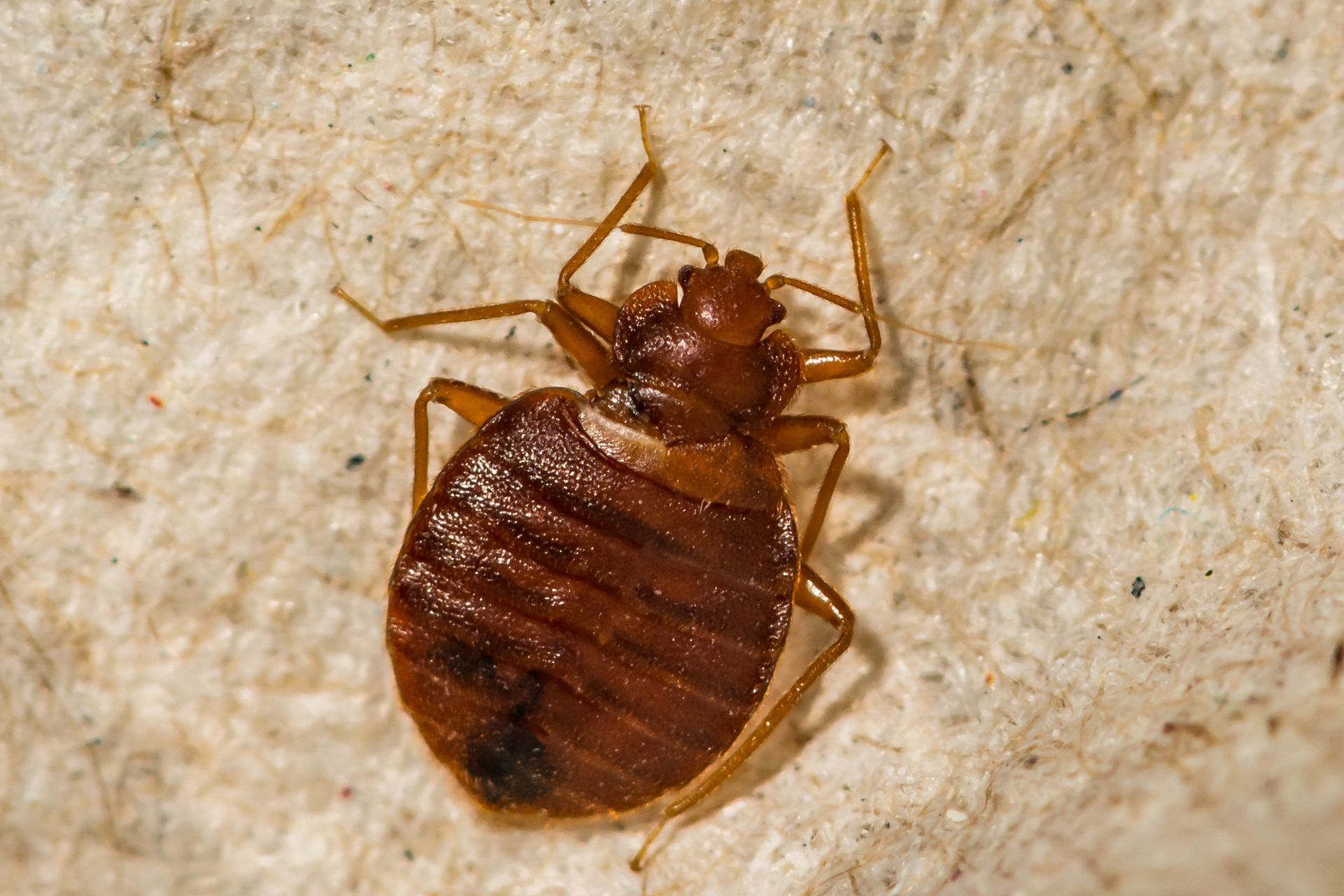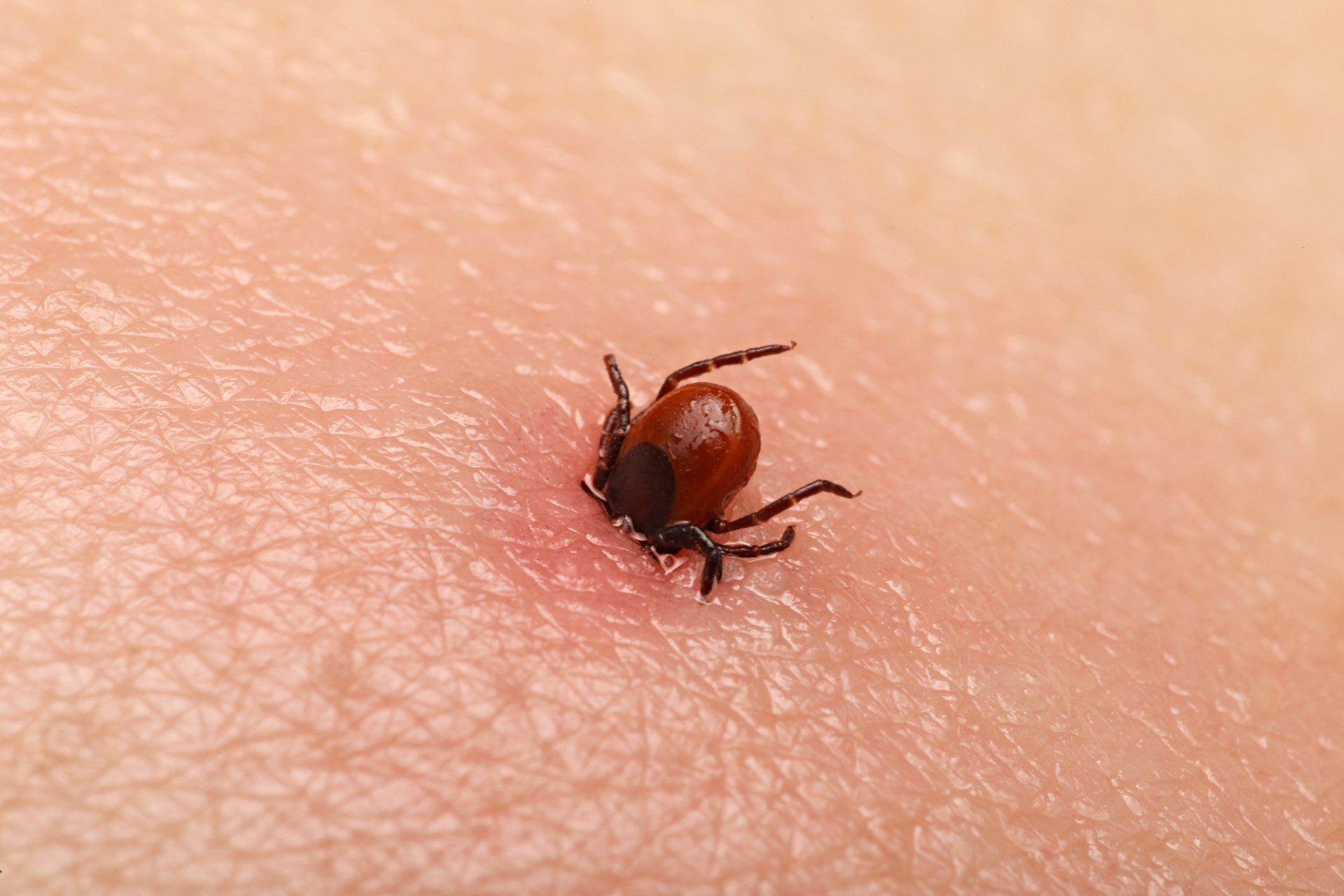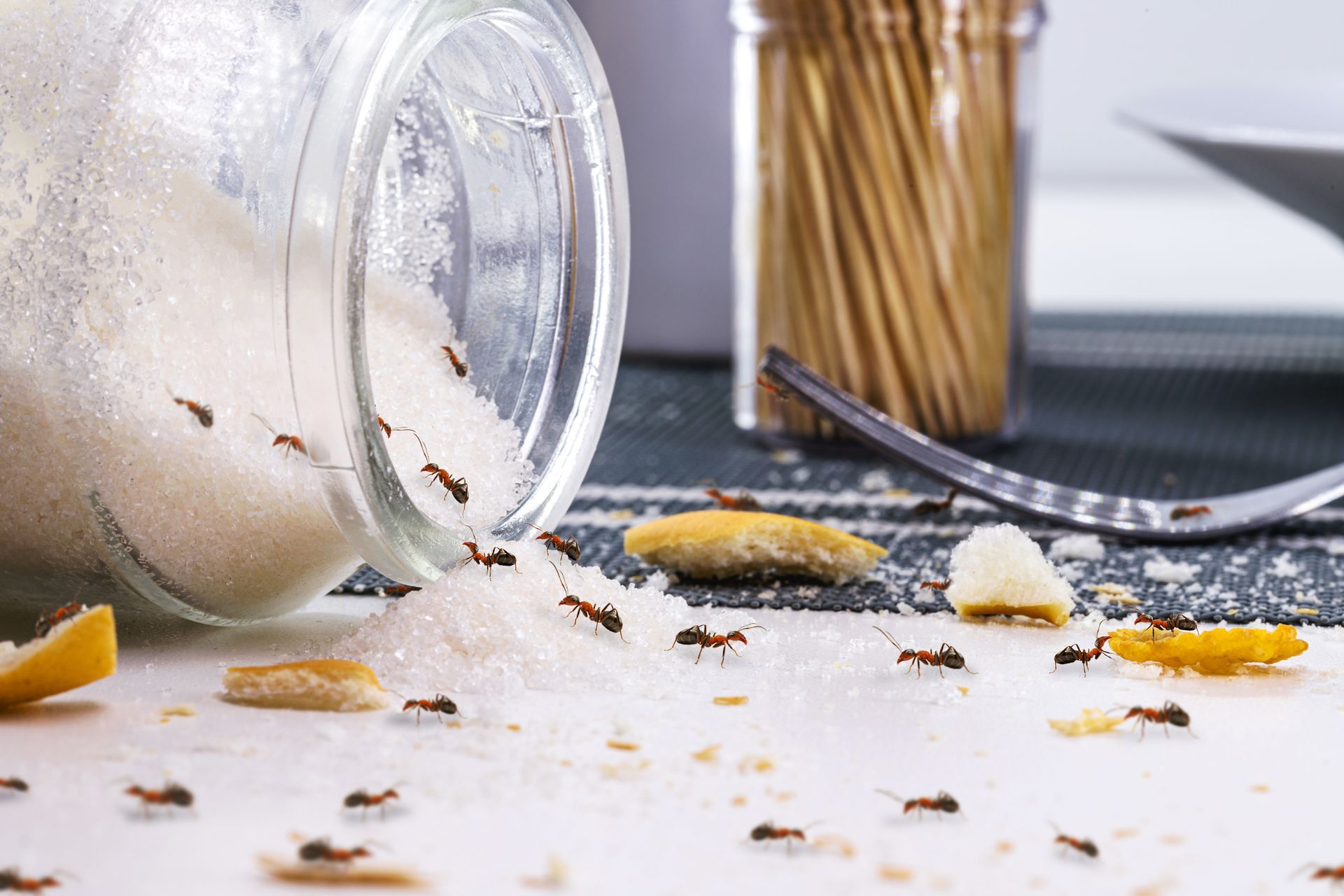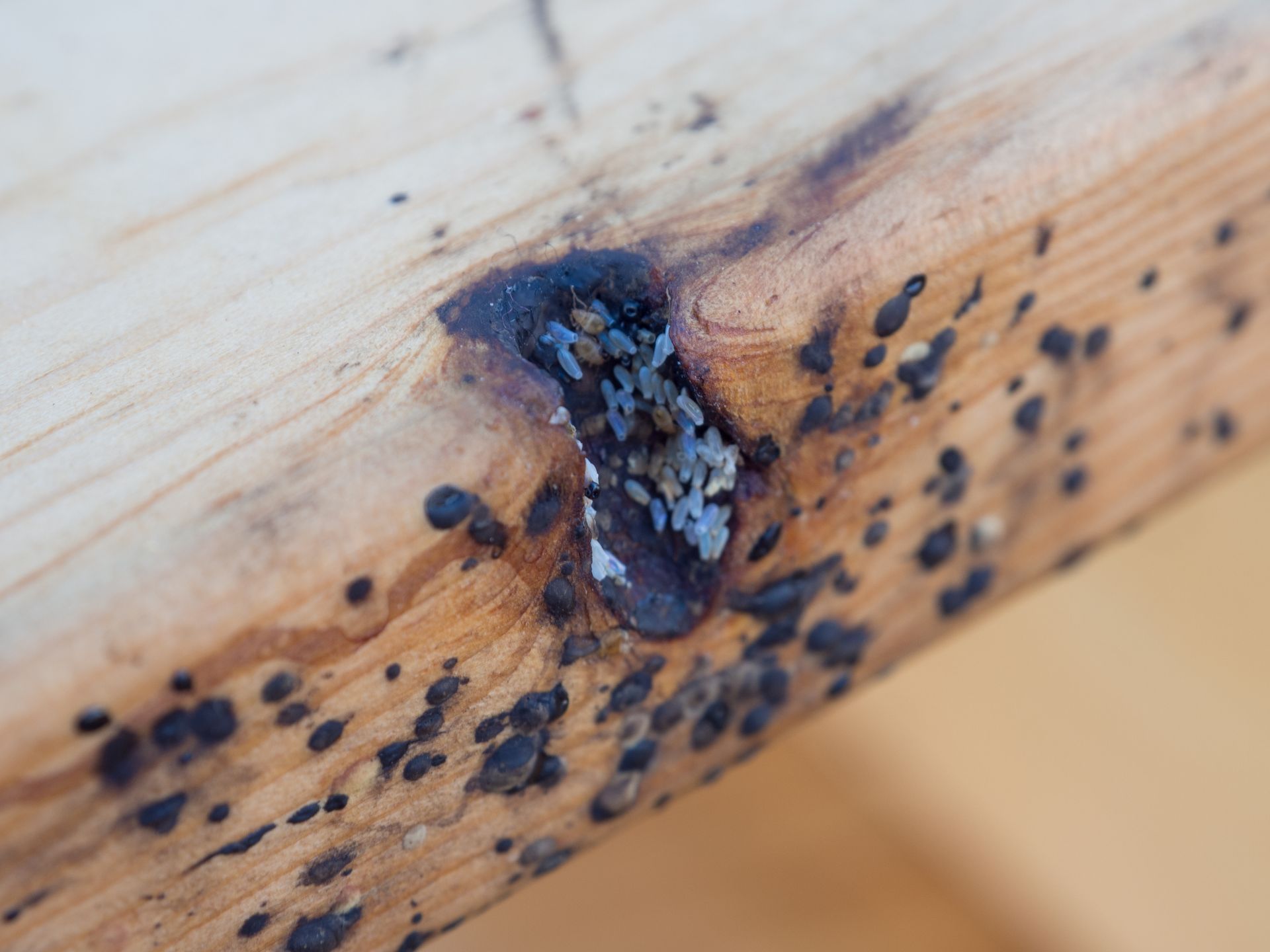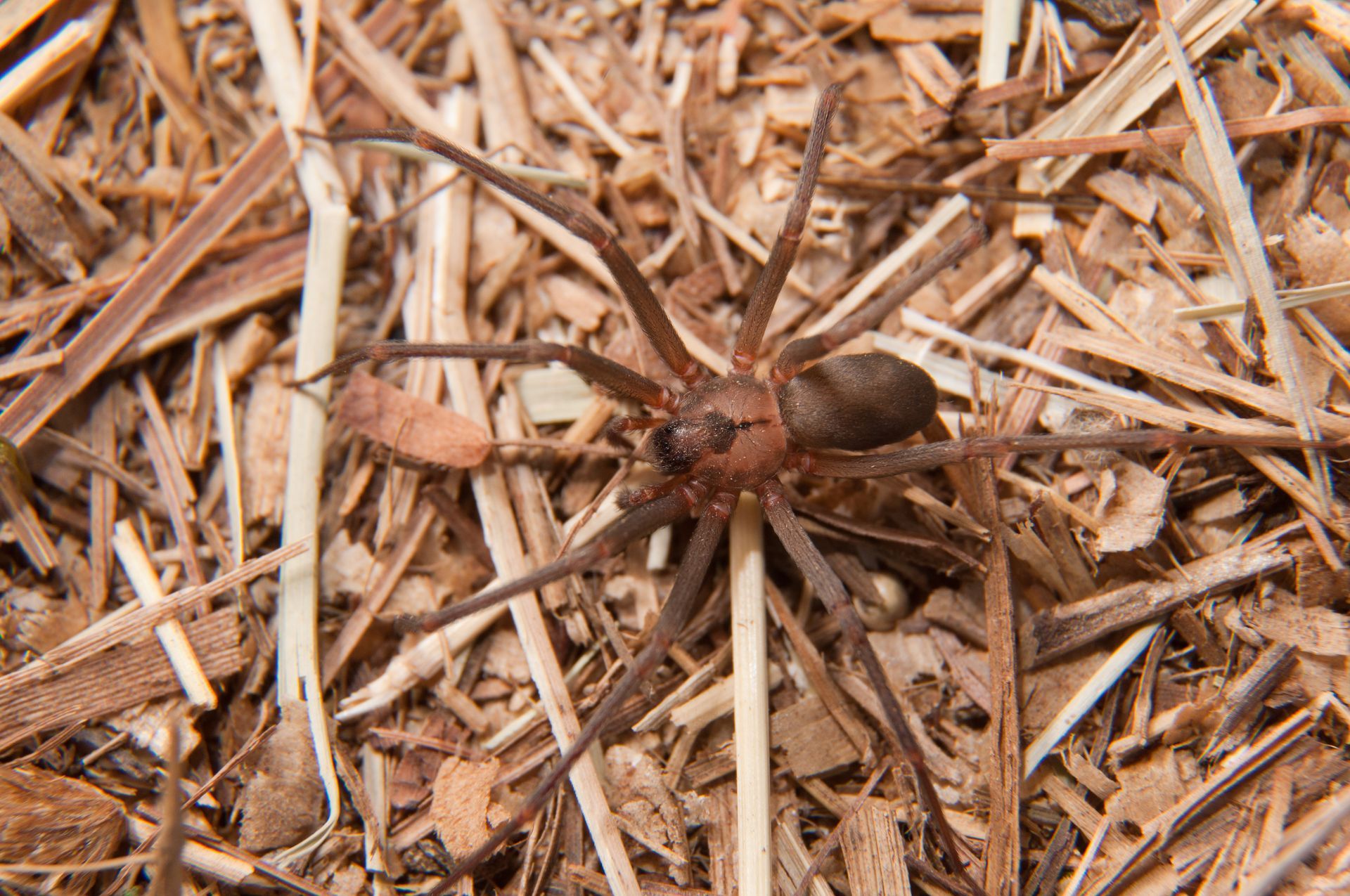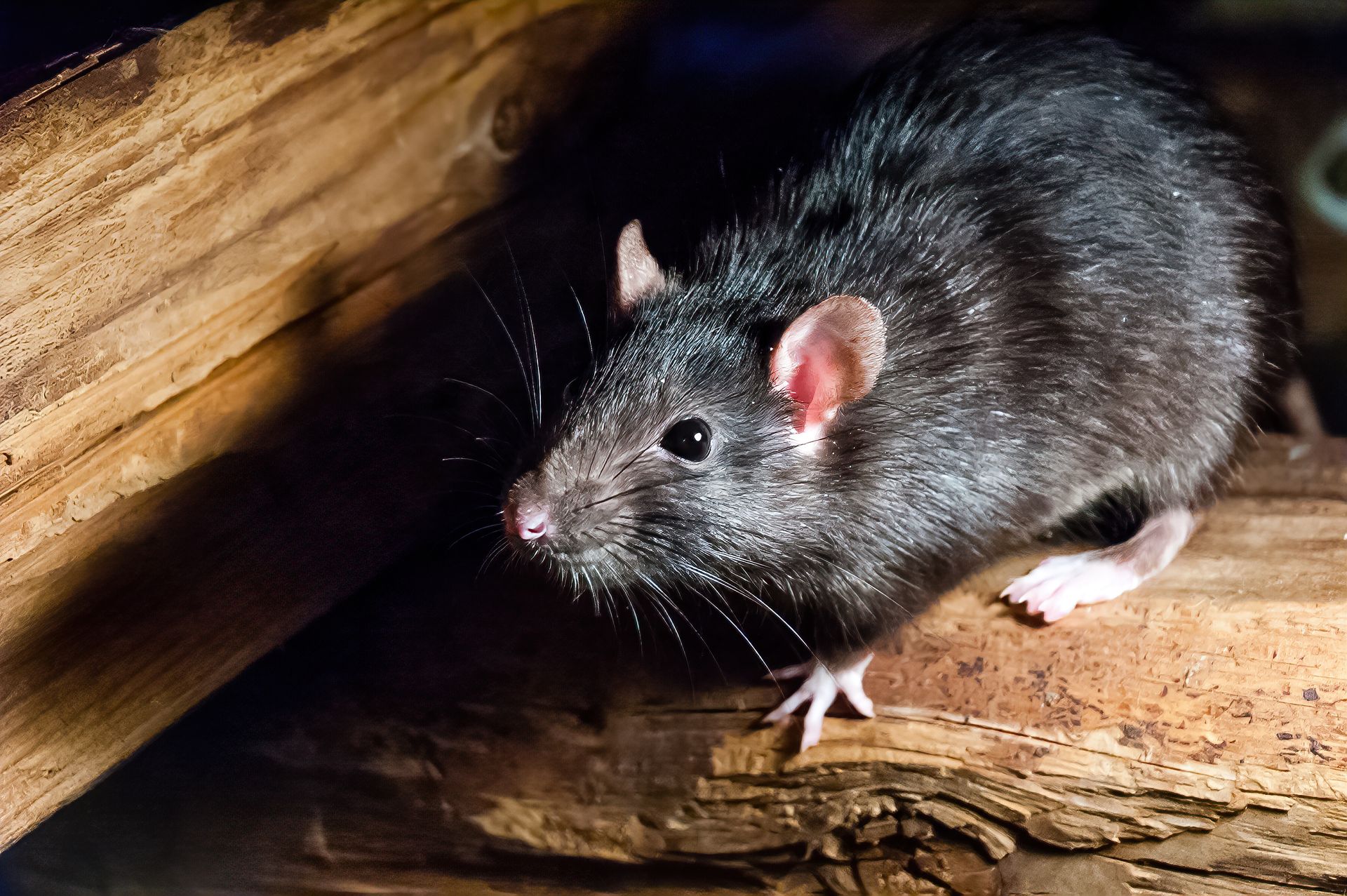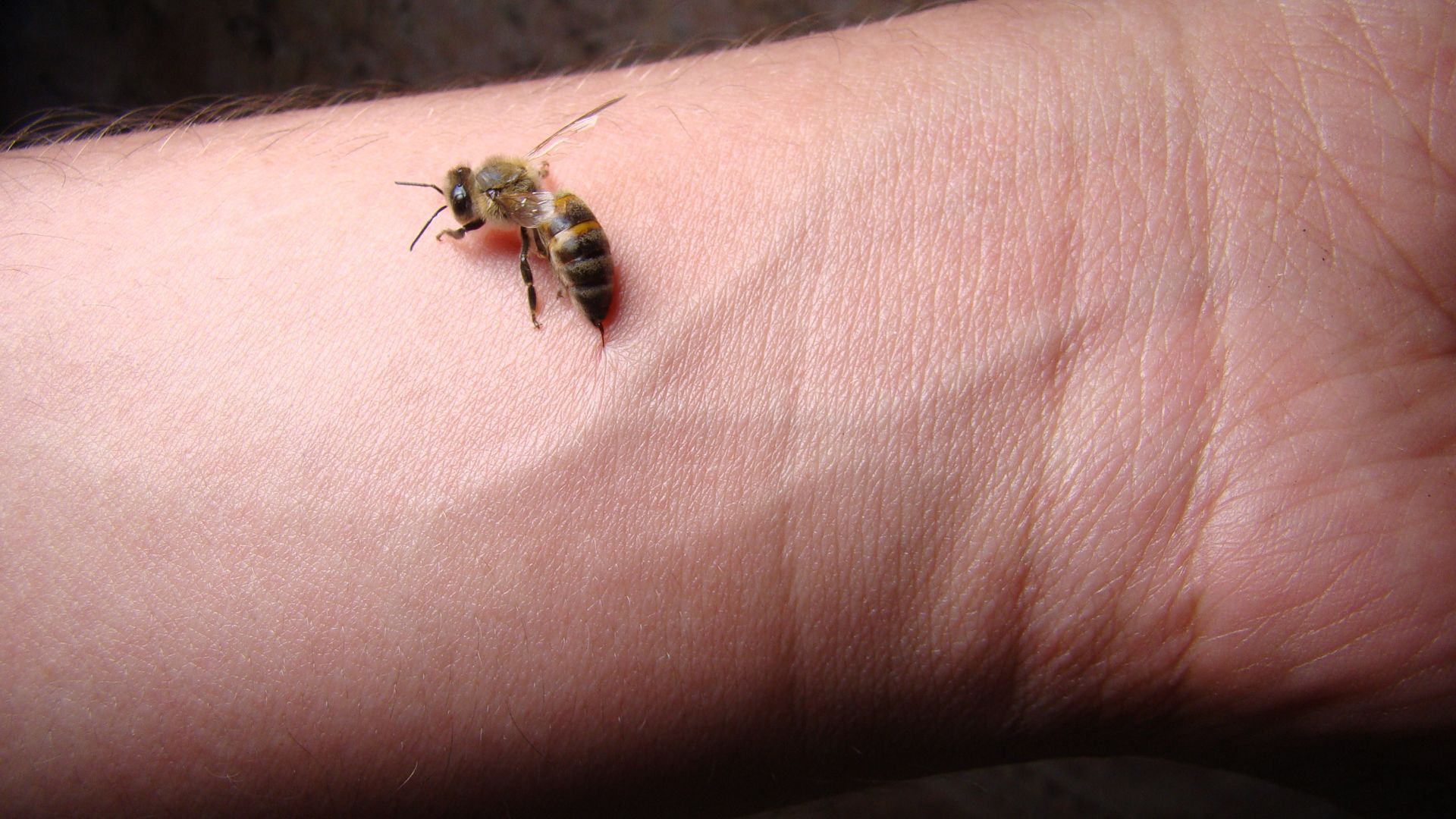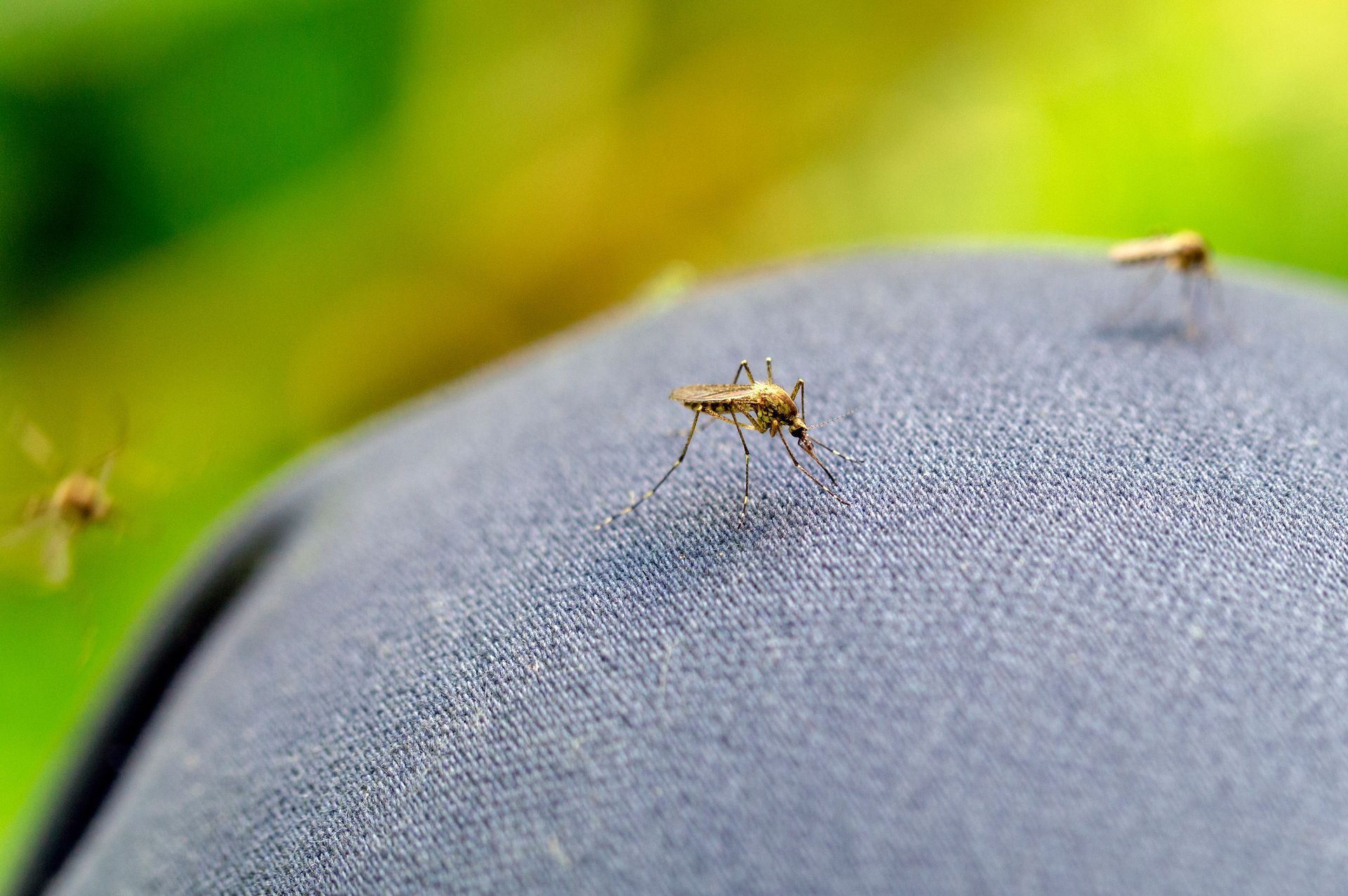What are Aphids & What Do They Look Like?
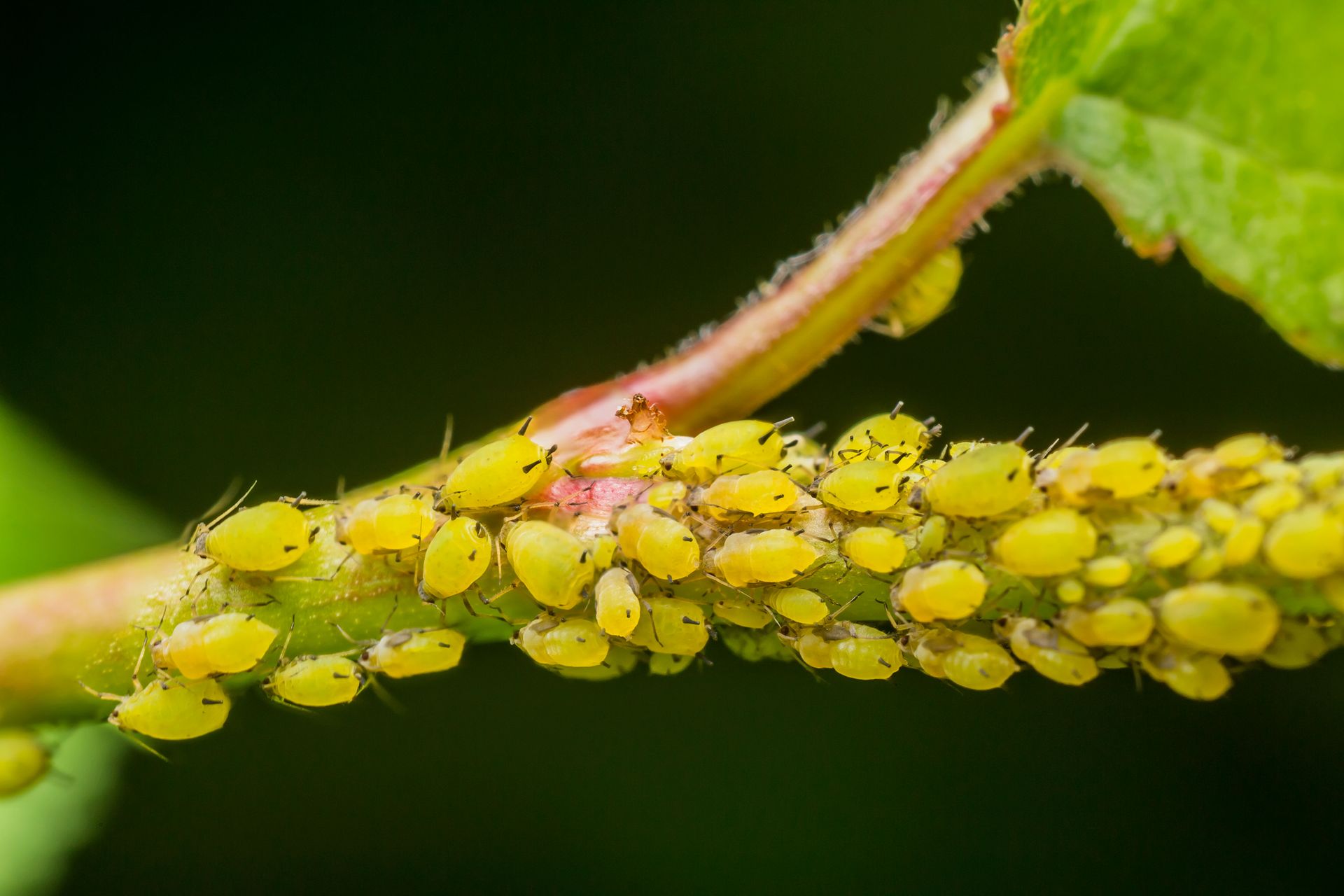
Aphids are tiny insects that suck the sap from leaves and plants. Aphids are harmless in small numbers, but they can rapidly multiply into huge populations and damage the leaves and plants they’re feeding on. Aphid infestations can lead to discolored or wilted leaves, stunted plant growth, and mold growth, all of which can ruin your home’s landscaping.
Thankfully, there are several effective ways to handle or prevent an aphid infestation.
How to Identify Aphids
You can identify aphids by the following characteristics:
- Shape: Aphids have pear-shaped bodies with antennae. You can spot two tails (known as “cornicles”) sticking out at the end of their abdomens. The cornicles are the easiest way to tell aphids apart from other bugs.
- Size: Aphids are tiny insects so they’re difficult to spot unless you’re inspecting a plant very closely. They’re only 2-4 millimeters long (1/16-1/8 inches). However, a large population of aphids may be very easy to spot because they’ll nearly blanket the leaves they’re feeding on.
- Numbers: Most aphids feed in large groups, although you can find single ones or very small groups.
- Color: Aphids range in color from green, yellow, black, red, or gray. The color depends on the species of aphid and also the types of plants the aphids have been eating. Winged aphids may be a little darker, but they’re similar in color.
- Wings: Most aphids are wingless. However, some aphids develop wings when the population becomes crowded and the plants they’re feeding on begin to run out of nutrients. The winged aphids will fly to other plants to start new colonies.
- Young: Immature aphids (called “nymphs”) look the same as adults, but smaller. As they grow, they shed their exoskeletons on leaves. These white skins may be an indicator of an aphid infestation.
- Distribution: Aphids are mostly found in northern temperate climates. There are about 1,350 species in North America, but only a handful of aphid species are considered pests.
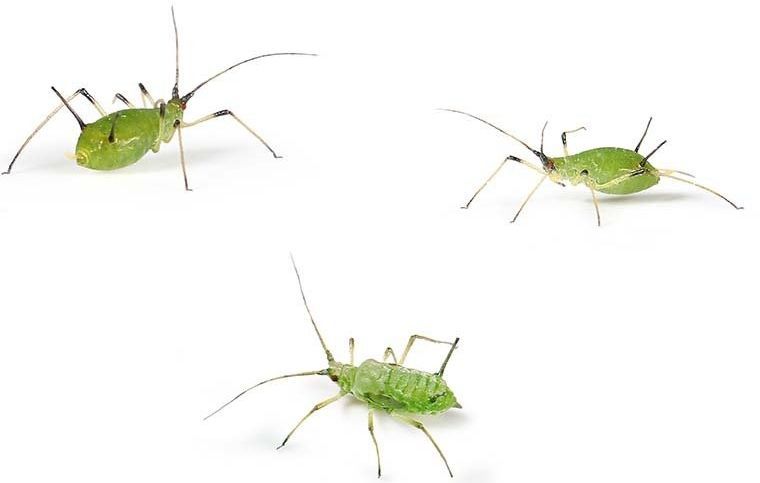
What Do Aphids Eat?
Aphids feed on plant sap, which contains water, sugar, and other nutrients. Leaves that are heavily infested will turn yellow or wilt because too much sap is being removed. However, aphid infestations don’t cause serious harm to established trees and plants.
Aphid infestations pose a more serious threat to new plantings, and there are certain types of plants that are sensitive to aphid feeding.
When aphids feed, they inject saliva into the plant that causes the leaves to become distorted. Younger plants that get infested may ultimately sprout deformed flowers or fruits, or suffer from stunted growth.
What Problems Do Aphids Cause?
Aphid infestations can cause the following problems in your plants:
- Damaged Leaves: Leaves become twisted, curled, or yellow.
- Poor Plant Growth: Your plants won’t grow much or the shoots will die and be unable to produce flowers.
- Virus Transmission: Some aphids carry plant viruses and can infect your plants when they bite into them. Aphids can carry viruses like cucumber mosaic virus, which infects annuals, perennials, and many types of vegetables including cucumber, pumpkin, squash, melon, beans, tomato, lettuce, and beats.
- Honeydew Deposits: During an aphid infestation, there may be large amounts of “honeydew” left on your plants. Honeydew is a sugary liquid waste produced by the aphids. Honeydew will dot your plants and also any surfaces lying beneath an infected tree or plant (for example, your car may be strewn with honeydew if it’s parked under an infested tree). Honeydew is not inherently dangerous but it can be a nuisance. It may also attract ants, yellow jackets, and other bugs that feed on the honeydew.
- Mold: Sooty mold fungus can grow on honeydew deposits and turn the plant leaves black. The mold isn’t harmful to the plant or tree, but it’s unsightly and may pose a health hazard.
How Do Aphid Infestations Start?
An aphid infestation begins when a few winged aphids fly onto a plant and leave behind a few young aphids. The young aphids feed on the plant and grow in size. They mature rapidly and are able to start reproducing in only 7 to 10 days.
Most of the aphids are females and each can produce 40 to 60 offspring. Thus, aphid populations can explode once the first batch of aphids are able to reproduce. A dozen aphids can lead to hundreds of thousands of aphids infesting a plant in just a matter of weeks.
Once the plant begins to lose is nutritional value, due to overfeeding by the aphids, the process repeats: winged aphids carry young aphids to new plants, where the young aphids will start a new colony.
Aphid Life Cycle
The aphid life cycle varies from one species of aphid to the next. Here are the most common characteristics of the aphid life cycle:
- In many aphid species, the females can reproduce asexually. This process typically takes 20 – 30 days.
- Depending on the species, some aphids give birth to live young, while others lay eggs.
- Young aphids are known as nymphs which can mature and be ready to produce offspring within a week under optimal conditions.
- Most aphids only live for about 1 month.
What Happens if Aphids are Left Unchecked?
In a best-case scenario, aphids will ruin the aesthetic appeal of your landscaping by destroying the leaves on your plants and leaving behind sticky honeydew deposits that attract ants or grow mold.
In a worst-case scenario, an aphid infestation may cause true damage to your plants by stunting their growth or destroying their ability to produce fruit and flowers—if they don’t kill your plants altogether by overfeeding or transmission of plant viruses.
Aphid infestations can severely impact your garden or landscaping if they’re allowed to grow in numbers and spread from one of your plants to the next.
How to Control Aphids
There are several ways you can control aphid infestations or prevent them from occurring in the first place.
Aphids’ Natural Predators
Aphids have many natural predators, including:
- Ladybugs
- Lacewings
- Parasitic wasps
- Syrphid fly larvae
A few predators may not be enough to quell an aphid infestation. However, having natural predators in your garden could help you prevent small numbers of aphids from exploding into large populations.
You can draw natural predators to your garden by curating a selection of plants that will blossom all throughout the year.
Aphids are also highly susceptible to wind, water, and rain. In fact, light rainfall can significantly reduce an aphid population.
Home Remedies for Aphid Infestations
You can do the following things at home to deal with aphid infestations or prevent them from happening:
- Watering and Fertilization: Watering and fertilizing your trees and plants can make them more resilient against aphid feeding.
- Examine Your Plants: Early detection is key in preventing an aphid infestation. Examine your plants every week to see if there are aphids feeding on the leaves. Aphids usually feed on the underside of leaves.
- Crush or Prune: If you find small numbers of aphids on your plants, you can crush them with your hand or remove them with pruning.
- Remove Weeds: Weeds like sowthistle and mustard can support large aphid infestations.
- Use Oils: You can apply summer oils to some types of plants. Oils are effective because they disrupt the membranes on the aphids, but remember your plants can suffer foliage burn if you apply oils in high temperatures. You also shouldn't spray oils during the growing season.
- Use Soaps and Salts: Apply soapy water (just a few drops of dish soap) to your plants and reapply every 2-3 days for 2 weeks. You can also mix 1 quart water, 1 teaspoon liquid dish soap, and a pinch of cayenne pepper to create a popular anti-aphid remedy. Insecticidal salt and fatty acid salts may also be effective.
- High Pressure Water Spray: Aphids are small insects so they can easily be blown off plants by spraying high-pressure water. The aphids will either be crushed by the water pressure or blown far enough away from the plant that they might not be able to find their way back to it. Water spray is one of the most effective ways of clearing an aphid infestation but it’s a challenging method if there’s an aphid infestation on a tree. When you’re spraying a tree, it can be difficult to get enough coverage with the spray to get rid of all the aphids. You would have to wash nearly all the leaves, which is difficult without the right equipment. In this case, it might be better to enlist a pest control service to do it for you.
- Use Pesticides: Pesticides are a very effective way to deal with aphid infestations, but this can also be a very challenging method. First, certain pesticides may be harmful to pollinator insects, like bees and butterflies—you don’t want to get rid of aphids at the expense of other important bugs. They might also kill predators that feed on the aphids. Second, you need to be mindful of when you use pesticides. Pesticides may be harmful to plants if you apply them during the blooming period. Third, pesticides need to be widely applied, which can be difficult if the infestation is in a tree or covering a wide range of plants. Finally, pesticides can cause personal injury if you’re not careful about handling them. Once again, it may be useful to enlist a pest control service if you think pesticides are your best option for dealing with aphids.
Pesticides
You may consider using pesticides if an aphid infestation is causing significant problems.
There are three types of pesticides:
- Low-Risk Pesticides
- Residual Pesticides
- Systemic Pesticides
Low-Risk Pesticides
Low-risk pesticides do little harm to the environment and helpful insects that are not infesting your plants. Insecticidal soap, salts, and summer oils are all examples of low-risk pesticides. Neem (azadirachtin) is another plant-based pesticide that repels aphids. It does not immediately kill the aphids, but it causes them to stop feeding and slowly starve.
Residual Pesticides
Unlike low-risk pesticides, residual pesticides work more quickly and do not need to be reapplied on a regular basis. Common residual pesticides include:
- Acephate
- Permethrin
- Bifenthrin
- Lambdacyhalothrin
- Cyfluthrin
- Malathion
The downside to residual pesticides is that they can kill many helpful bugs in your landscaping, and they can also harm certain plants if applied in the wrong season.
Systemic Pesticides
Systemic pesticides are an effective way to deal with aphid infestations in trees. They’re applied to the base of the tree, and the pesticide is transported through the sap to the branches and leaves. The aphids die after consuming the pesticide.
Systemic pesticides can take 2 to 4 weeks to kick in, depending on the size of the tree. Like residual pesticides, the downside of systemic pesticides is that they will also kill other helpful insects feeding on the tree, including pollinator insects.
Common systemic pesticides include imidacloprid and dinotefuran.
Call EcoGuard Pest Management for Aphid Related Problems
Need to get rid of an aphid infestation? Contact EcoGuard Pest Control as soon as possible. Our pest control experts will determine the most effective and eco-friendly way to deal with your aphid infestation and prevent further damage to your landscaping.
Request A Free Estimate
We will get back to you as soon as possible
Please try again later
Immediate Service Available
Services
Customer Care
Legal
Working hours
- Mon - Sun
- -
All Rights Reserved | EcoGuard Pest Management | All Phone Calls Recorded | By Using Website You Agree To Terms Of Use



